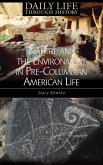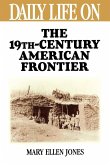The nineteenth-century saw a significant transformation in the United States. In one short century, the nation had seen the populating of the Great Plains and West, the decimation of native Indian tribes, the growth of national transportation and communication networks, and the rise of major cities. The century also witnessed the destruction of the nation's forests, battles over land and water, and the ascent of agribusiness. With these changes in resource use patterns and values came a concordant shift in attitudes toward nature. Conservation and preservation emerged as watchwords for the 1900s. The century that started with an attitude of environmental conquest thus ended by embracing conservation and a new environmental awareness.
Hinweis: Dieser Artikel kann nur an eine deutsche Lieferadresse ausgeliefert werden.
Hinweis: Dieser Artikel kann nur an eine deutsche Lieferadresse ausgeliefert werden.








